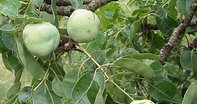
Name
Marula Tree (Scelerocarya birrea) The marula tree has a history that dates back thousands of years. Archaeological evidence has shown that this tree has been a nutritional source since about 10 000 BC. The marula fruit and nut are rich in minerals and vitamins, and it is estimated that 24 million marula fruits were eaten in Zimbabwe’s Pomongwe Cave.
During the ancient times, this fruit was depended upon by people of South Africa, Botswana and Namibia. Being one of the continent’s botanical treasures, there are many legends about this tree and its many uses – including its bark, fruit, kernels and nuts. It is best known for ‘driving elephants mad’, as they eat the slightly fermented fruit from the ground.
Description
The marula tree is deciduous and blooms from September to November. It produces fruit that is high in vitamin C from January to March. This tree can reach a height of 18 m, and its fruits and leaves are enjoyed by the waterbuck, warthog, elephant, giraffe, kudu and elephant.
The marula tree can be found in South Africa in KwaZulu-Natal, stretching as far north as Ethiopia. They grow in sandy loam soils and in woodlands of various sorts.
Marula Tree Uses
A drink can be made from boiled marula fruit skin, or a coffee substitute can be made from burnt skin. The wood of the tree is soft and used for carving. Rope and light brown dye can be made from the bark.
The bark also contains antihistamines and is therefore used for cleansing by steeping the bark in boiling water and inhaling the steam. To treat dysentery and diarrhea, a piece of bark is squashed to a pulp, mixed with cold water and swallowed. It is also used as a preventative to malaria.
The green leaves of the marula tree is eaten to alleviate heartburn. Large saturniid caterpillars and the larvae of cerambycid wood boring beetles are taken from the marula tree and roasted. There are one or two flavourful nuts inside the flesh of these insects which are rich in protein. The oil is also used as a skin cosmetic.
Marula Tree Fruit
The green marula fruit is the size of a small plum, and very juicy and flavourful. It is high in vitamin C and can be eaten fresh. It is also cooked and used to produce juices, jams and alcoholic drinks.